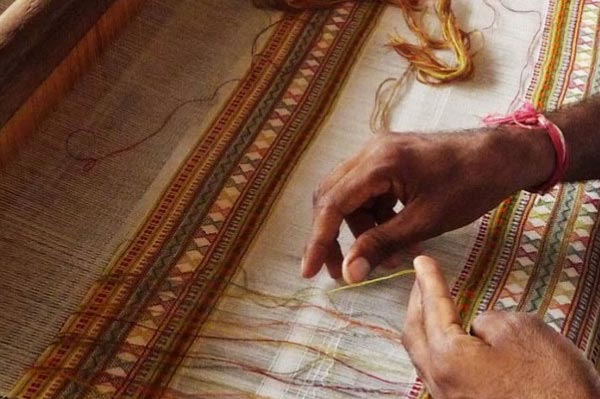Kachchhi weavers traditionally come from the Marwada and Maheswari communities. The Maheshwaris transitioned into the art of mashroo, while the Marwada style is now well known as Kachchhi weaving. This community is versatile, crafting woven textiles, leather and woodwork all over Kachchh.
Weavers are closely linked socioeconomically with their local clients, the Ahirs, Rajputs, and Rabaris. Each weaver was once personally linked with a Rabari family, who would supply yarn from sheep and goats. Farming communities like Ahirs cultivated kala cotton, which produced woven textiles for shoulder cloths and headgear. Sheep and goat wool was used for veils, skirts, shawls and blankets. The designs woven into Kachchhi woven fabrics were inspired by the communities who wore them, replicating the shapes of musical instruments, the footsteps of an animal herd, etc. The names for motifs like vakhiyo, chaumukh, satkani, hathi, or dholki are evocative of the rural images.



